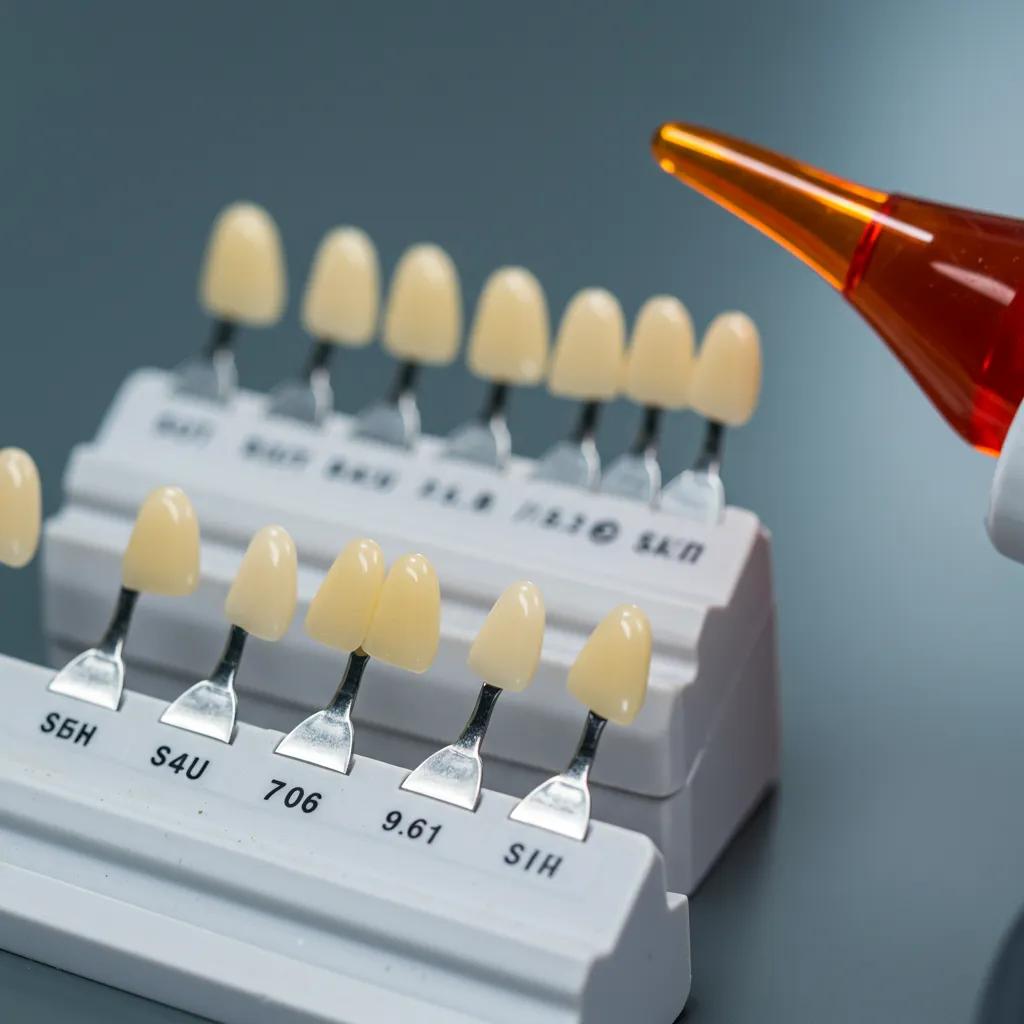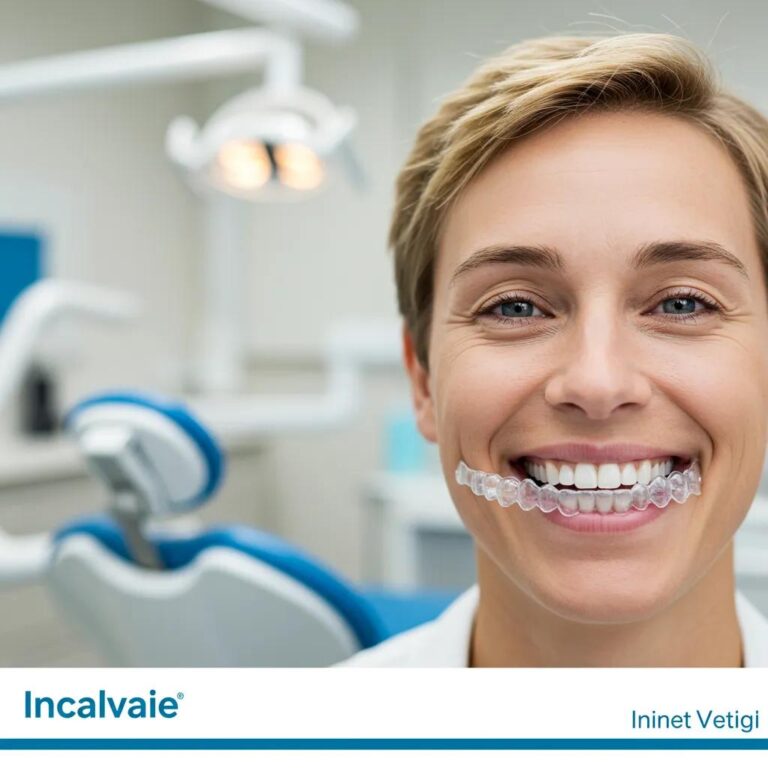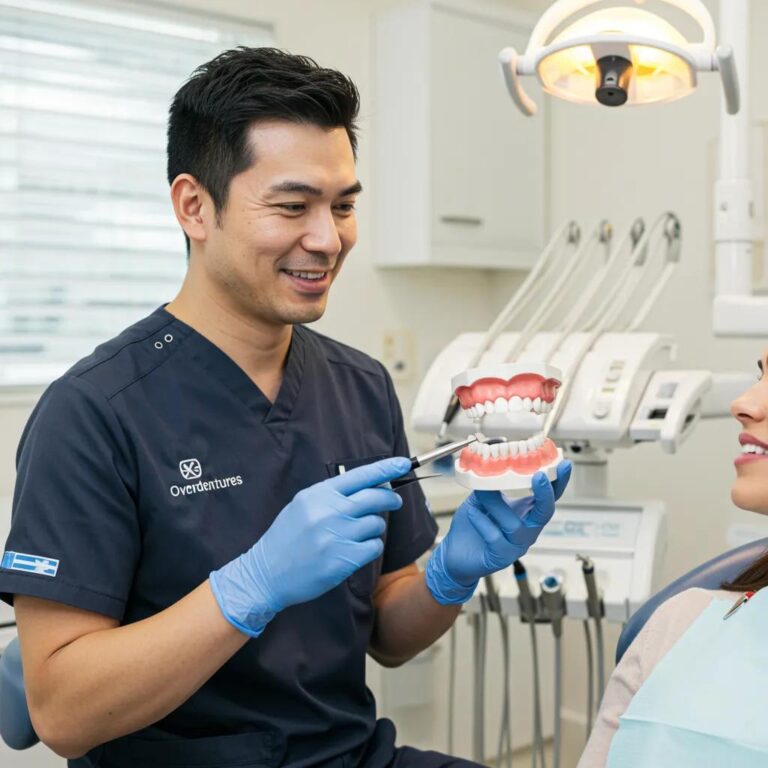Cosmetic Dental Bonding Procedure: Complete Guide to Benefits, Costs, and Steps
Cosmetic dental bonding is a minimally invasive restorative procedure that uses tooth-colored composite resin to repair chips, close small gaps, and mask superficial discoloration while restoring natural-looking form and function. This guide explains what a cosmetic dental bonding procedure entails, the materials involved such as composite resin and curing lights, and the practical benefits patients can expect, including same-day aesthetic improvements and minimal recovery. Many people seek tooth bonding to fix front teeth imperfections without committing to veneers or crowns, and this article outlines candidacy, step-by-step procedure details, realistic cost expectations, aftercare, and comparisons with alternative restorations. Readers will learn how bonding works biologically and procedurally, what factors affect durability and price in Sacramento, and how to maintain bonded teeth for years. The article also covers financing and local access options to make bonded restorations achievable, and it concludes with reasons patients choose Dental Krafts and Dr. Neha Sharma for cosmetic dental bonding in Sacramento. Expect clear procedural lists, EAV-style cost and comparison tables, and concise FAQ-style answers optimized for quick decision-making.
What Is Cosmetic Dental Bonding and How Does It Work?
Cosmetic dental bonding is a direct composite bonding technique in which a dentist applies tooth-colored composite resin to prepared tooth surfaces, sculpts the material to the desired shape, and cures it with a specialized light to create a durable, aesthetic restoration. The mechanism relies on micromechanical adhesion: after etching the enamel, a bonding agent forms a tight interface between tooth structure and composite resin, allowing the resin to integrate and restore form and color. Patients benefit from restored tooth contours, improved shade matching, and immediate visible results, typically in a single visit with minimal sensitivity afterward. Understanding these basic steps leads directly into the specific materials and instruments that make bonding predictable and esthetic.
What materials are used in dental bonding, including composite resin?

Composite resin is a tooth-colored restorative material composed of a resin matrix and inorganic filler particles that provide strength, polishability, and color stability; it is matched to adjacent tooth shades using a shade guide to achieve a natural appearance. Bonding protocols use an etchant to prepare the enamel surface, a bonding agent to create a durable interface, and a curing light to polymerize the resin in incremental layers, which reduces shrinkage and enhances contour control. Shade matching and layering techniques allow clinicians to mimic translucency and opalescence of natural teeth, achieving lifelike results for front teeth bonding and direct composite restorations. These material choices and protocols set expectations for longevity and maintenance, which we will explore in the procedural steps that follow.
How does the bonding process repair chips, gaps, and discoloration?
Bonding repairs chips by filling missing enamel with layered composite that is sculpted and contoured to restore anatomy and occlusion, while small gaps can be closed by building lateral surfaces to reduce interproximal spacing and improve alignment. For superficial discoloration, composite resin masks stained enamel with a matched shade and smooth polished surface, offering an aesthetic solution without aggressive preparation; however, deep intrinsic stains may require alternative restorations. The practical result is an immediate improvement in smile aesthetics and function, typically achieved in one appointment, though limitations exist for extensive structural damage that may need indirect restorations. With these clinical effects in mind, it becomes important to know who performs bonding and how patient comfort and expertise influence outcomes.
Who performs cosmetic dental bonding at Dental Krafts?
At Dental Krafts, cosmetic dental bonding is provided by clinicians who emphasize personalized, gentle care and clear explanations throughout treatment, with Dr. Neha Sharma named as the primary provider for cosmetic services in the clinic’s local practice. The clinic positions itself as an accessible lead-generation and information hub offering advanced, patient-centered restorative and cosmetic treatments delivered with attention to comfort and predictable outcomes. Patients considering bonding can expect a consultative approach that includes photographic documentation and shade-matching to align expectations with achievable results. This provider-focused perspective sets the stage for exploring the specific benefits that make bonding an attractive cosmetic option.
What Are the Key Benefits of Dental Bonding?
Dental bonding offers immediate aesthetic enhancement, conservative tooth preparation, cost-effectiveness compared to indirect restorations, and versatile applications across chips, gaps, and discoloration—all in a single-visit solution for many patients. The mechanism of benefit arises from direct composite application and adhesion to enamel, enabling quick contouring and shade blending that restores confidence and smile symmetry without extensive removal of tooth structure. Patients typically experience minimal downtime and short-lived sensitivity, making bonding suitable for front teeth bonding and esthetic improvements when speed and preservation are priorities. These advantages make dental bonding an efficient first-line cosmetic option, and the next paragraphs explain why it is considered minimally invasive, how it improves confidence, and what drives its favorable cost profile.
Dental bonding provides several practical benefits that directly affect patient experience and outcomes:
- Minimally Invasive Restoration: Bonding preserves enamel because it often requires little to no tooth reduction, maintaining natural tooth strength.
- Single-Visit Improvement: Direct composite techniques allow many cases to be completed in one appointment, offering immediate aesthetic results.
- Cost-Effective Option: Per-tooth costs are generally lower than veneers or crowns, making bonding an accessible cosmetic choice.
- Versatility: Bonding can address chips, small gaps, and superficial discoloration without complex lab work.
Why is dental bonding considered minimally invasive and quick?
Dental bonding is minimally invasive because it usually requires little or no enamel removal; the approach focuses on adding restorative material rather than extensive preparation, which conserves natural tooth structure and reduces procedural risk. Typical appointment times vary, but clinicians commonly complete a single tooth in about 30 to 60 minutes depending on complexity, while multi-tooth cases are scheduled to balance precision and patient comfort. Recovery is immediate with no significant downtime, though brief sensitivity for 24–48 hours can occur as the tooth adjusts to the restoration; patients are advised to avoid very hard foods immediately after treatment. This rapid turnaround contributes to bonding’s value proposition, leading naturally into how bonding impacts smile aesthetics and confidence.
How does dental bonding improve smile aesthetics and confidence?
By precisely sculpting composite resin and matching shade and translucency with adjacent teeth, dental bonding restores natural contours and color, making asymmetries and minor defects less noticeable and often transforming a patient’s smile in one visit. The visual improvement extends beyond appearance: restored teeth can improve bite comfort, reduce self-conscious behaviors, and support better social and professional confidence for many patients. Small case vignettes commonly show patients reporting satisfaction with immediate aesthetic gains and ease of maintenance compared with more invasive options. Understanding these aesthetic and psychological impacts helps frame bonding’s role as a practical, conservative cosmetic treatment.
What makes dental bonding a cost-effective cosmetic dental option?
Bonding is cost-effective primarily because it uses direct composite materials applied in-office without laboratory fabrication, which reduces procedural steps and material costs compared with veneers and crowns that require lab work and sometimes multiple appointments. The typical cost per tooth for a Cosmetic Dental Bonding Procedure ranges from $300–$600 per tooth, making it an economical choice for isolated defects or when multiple teeth require modest correction. While bonding may require periodic touch-ups or replacements over time, the lower upfront cost and preservation of enamel make it a practical solution for many patients. Knowing cost drivers leads directly to the next section detailing the procedural steps patients will experience.
What Are the Step-by-Step Procedures in Dental Bonding?
The step-by-step bonding workflow begins with a consultation and shade matching, continues with conservative tooth preparation and bonding agent application, moves into incremental composite placement and curing, and finishes with shaping and polishing to achieve natural texture and luster. Each step has a specific purpose: consultation aligns goals, preparation ensures adhesion, layering controls shrinkage and contour, and finishing maximizes esthetics and occlusal harmony. Time estimates per step vary, but clinicians typically allocate 30–60 minutes per tooth for the application, curing, and finishing phases to ensure precision. With that overview, the following subsections explain consultation, tooth preparation, and final finishing in practical detail.
How is the consultation and shade matching performed?
The consultation begins with a clinical exam and discussion of the patient’s aesthetic goals, during which clinicians assess tooth structure, occlusion, and oral health to determine if bonding is appropriate and predictable. Shade matching uses standardized shade guides and often intraoral photography to document baseline color and plan layering strategies; clinicians may simulate outcomes with temporary mock-ups or digital previews when available. Treatment planning includes discussing longevity expectations, maintenance needs, and potential alternatives like veneers or crowns if defects are extensive, ensuring patients make informed decisions. With clear planning in place, the procedure moves to tooth preparation and composite application.
What happens during tooth preparation and composite resin application?
Tooth preparation for bonding is conservative: the enamel surface is lightly roughened or etched to improve micromechanical retention, followed by application of a bonding agent that chemically and physically links the composite to the tooth. Composite resin is placed in incremental layers, sculpted to match natural anatomy, and each layer is polymerized with a curing light to ensure complete set and minimize internal stress; layering enhances color depth and translucency. Clinicians check contacts and occlusion as work proceeds to avoid high spots that could compromise durability, and adjustments are made before final polishing. Properly executed layering and curing are essential for long-term performance and esthetic integration.
How is the composite resin cured, shaped, and polished?
Curing uses a high-intensity handheld curing light to polymerize composite layers, typically for 10–40 seconds per increment depending on material and thickness, achieving a hard, stable restoration; clinicians follow manufacturer recommendations for each product. After curing, finishing burs and fine abrasives are used to contour anatomy, refine margins, and adjust occlusion, followed by progressive polishing with polishing pastes or discs to produce a natural luster that resists staining. A final evaluation assesses contacts, contours, and patient comfort, and clinicians provide aftercare instructions to protect the restoration during the initial set and beyond. These finishing steps directly affect longevity and patient satisfaction, which ties into cost and coverage considerations discussed next.
How Much Does Dental Bonding Cost and Is It Covered by Insurance?
Dental bonding costs vary with case complexity, but the typical range for a Cosmetic Dental Bonding Procedure is $300–$600 per tooth, reflecting materials, clinician time, and local practice overhead; front teeth and esthetic zones may command higher attention to shade layering and sculpting. Insurance coverage for purely cosmetic bonding is often limited, though coverage may apply partially when bonding has a restorative or functional indication; patients should check benefits and preauthorization with their insurer. Financing options and membership plans can make bonding accessible for patients who prefer spreading costs or reducing out-of-pocket expense, and local pricing in Sacramento may be influenced by clinic reputation and available technology. The following table provides a concise EAV-style cost breakdown to visualize typical price drivers.
Introductory note: The table below summarizes typical cost per tooth and primary factors that influence price so readers can quickly scan comparable attributes affecting estimates.
| Procedure Element | Relevant Factor | Typical Value/Range |
|---|---|---|
| Cosmetic dental bonding per tooth | Base cost in Sacramento market | $300–$600 per tooth |
| Multiple-tooth cases | Discount or time-driven pricing | May lower per-tooth cost |
| Complexity/extent | Number of surfaces, shade layering | Raises cost proportionally |
What factors influence the cost of dental bonding in Sacramento?
Local cost drivers include the extent of restoration (single surface versus multi-surface), whether multiple adjacent teeth require coordinated shade blending, and clinician expertise and time spent on artistic layering and finishing. Clinic overhead, technology availability, and materials used (higher-quality composite systems) also influence pricing, while additional services like photography and diagnostic imaging may add modest fees. Understanding these factors empowers patients to request itemized estimates and compare options, and it sets the stage for practical financing and membership choices offered by clinics.
Which financing options and membership plans does Dental Krafts offer?
Dental Krafts supports patient access through multiple affordability paths, listing financing options such as Sunbit and CareCredit as accepted methods to facilitate treatment payment over time, and offering membership plans with discounts to reduce out-of-pocket costs for ongoing care. For new patients, the clinic advertises a New Patient Special of $59 comprehensive exam and cleaning as an entry point to establish care and discuss cosmetic goals like bonding within a transparent financial plan. Patients are encouraged to inquire directly about plan specifics and qualification criteria during their consultation to align their treatment plan with available payment options.
How does dental bonding compare cost-wise to veneers and crowns?
Cost comparisons typically show bonding as the most economical per-tooth cosmetic option, with veneers and crowns costing substantially more due to laboratory fabrication and additional appointments; however, higher-cost options often provide greater longevity and stain resistance. The following EAV-style comparison table summarizes key attributes to help weigh initial cost against durability and invasiveness.
Introductory note: The comparison table below helps readers weigh bonding against veneers and crowns across cost, invasiveness, and durability for quick decision-making.
| Restoration Type | Key Attribute | Typical Comparison |
|---|---|---|
| Bonding | Invasiveness | Minimally invasive; little to no enamel removal |
| Veneers | Cost & durability | Higher cost; more durable and stain-resistant |
| Crowns | Structural support | Most invasive; best for extensive structural damage |
Who Is a Good Candidate for Cosmetic Dental Bonding?
Good candidates for cosmetic dental bonding are patients with minor to moderate cosmetic concerns—such as small chips, gaps, or superficial discoloration—who seek enamel-preserving, single-visit solutions and understand potential maintenance needs. The procedure is less suitable for teeth with large structural damage, extensive decay, or heavy bruxism that place high functional demands on restorations; in those cases, veneers or crowns may be recommended. Oral health status, including the absence of active decay and controlled gum disease, is a prerequisite for predictable bonding outcomes. For residents of Sacramento seeking a personalized assessment, schedule a consult with Dr. Neha Sharma at Dental Krafts to determine whether a Cosmetic Dental Bonding Procedure and the New Patient Special fit your goals and budget.
What dental issues can bonding effectively fix?
Bonding effectively corrects small fractures or chips, closes minor diastemas (small gaps), and masks superficial extrinsic staining or discoloration that does not respond to whitening alone, providing a conservative esthetic outcome. It can also reshape slightly malformed teeth or extend incisal length for symmetry and improved smile line balance, particularly on visible anterior teeth. Bonding proves especially useful as a conservative first-line cosmetic option or as an interim restoration while planning more extensive care if needed. Recognizing these use cases clarifies when bonding is an ideal choice and when alternatives are preferable.
Are there any limitations or contraindications for dental bonding?
Bonding is not recommended for severe structural loss, large restorations where mechanical strength is critical, or for patients with uncontrolled parafunctional habits such as heavy bruxism that can quickly damage composite; in such situations, crowns or onlays may be more appropriate. Extensive intrinsic discoloration or staining that penetrates deep enamel and dentin may be better addressed with veneers, which offer superior masking and long-term color stability. Additionally, active decay or periodontal disease must be treated before cosmetic bonding to ensure a stable foundation for adhesion. These limitations help shape realistic expectations and treatment planning decisions.
How Should You Care for Bonded Teeth and What Is Their Longevity?

Bonded teeth require conscientious daily care and reasonable habits to maximize lifespan; with proper maintenance, composite bonding commonly lasts between 3 and 10 years depending on material quality, occlusal forces, and oral hygiene. The mechanism behind longevity includes resistance to wear and staining, proper occlusion adjustment, and routine professional maintenance such as polishing and repair of small defects. Recognizing signs of wear early—such as chipping, color change, or margin separation—allows timely touch-ups that extend total service life. With these longevity concepts in mind, concrete daily habits support durability and esthetic preservation.
Introductory checklist: The list below summarizes daily and periodic habits that help maintain bonded restorations and minimize premature failures.
- Brush twice daily with a non-abrasive fluoride toothpaste and floss daily to control plaque around restoration margins.
- Avoid biting on hard objects (ice, pens) and limit highly staining foods and drinks to reduce surface discoloration.
- Wear protective appliances such as a nightguard if you have bruxism or a history of grinding to protect bonded surfaces.
What daily habits help maintain dental bonding results?
Daily maintenance for bonded teeth centers on gentle yet thorough oral hygiene, including brushing with a non-abrasive toothpaste and flossing to prevent stain deposition and plaque accumulation that can affect margins. Limiting acidic and highly pigmented beverages—such as red wine, coffee, and certain sauces—and using a straw for beverages when possible reduce surface staining risks on composite. Avoiding habits like nail-biting, chewing ice, or opening packages with teeth protects restorations from chipping, while patients with grinding issues should discuss nightguard options with their dentist. These practical measures directly influence how long a bonded restoration remains esthetic and functional.
How long does dental bonding typically last with proper care?
With appropriate technique and maintenance, dental bonding typically lasts between 3 and 10 years; longevity depends on composite material quality, occlusal forces, patient habits, and regular professional maintenance. Minor repairs are common and straightforward, often involving simple polishing or adding a fresh resin layer rather than full replacement, which helps preserve tooth structure over time. Regular dental visits allow clinicians to monitor margins and surface integrity to schedule repairs proactively. Understanding the expected lifespan helps patients weigh bonding versus longer-lasting but more invasive options.
When should patients consider touch-ups or replacements?
Patients should seek professional evaluation if they notice visible chipping, discoloration that cannot be removed with polishing, sensitivity at the bonded margin, or separation between composite and tooth structure, as these signs indicate a need for touch-up or replacement. Clinicians commonly recommend touch-ups when small defects or staining are localized and replacements when recurrent failures or extensive margins compromise function or esthetics. Periodic review during routine dental cleanings is an effective way to identify issues early and plan timely maintenance. Proactive monitoring preserves outcomes and reduces the chance of sudden, more extensive interventions.
How Does Dental Bonding Compare to Veneers and Crowns?
Dental bonding, veneers, and crowns differ across invasiveness, cost, durability, and indications: bonding is least invasive and most economical, veneers offer superior esthetics and stain resistance with moderate invasiveness, and crowns provide the most comprehensive structural support but require substantial tooth reduction. The choice depends on clinical goals, severity of defects, and patient preferences regarding longevity and budget. Below is an EAV comparison table outlining core distinctions to aid decision-making.
Introductory note: The table below summarizes differences across key attributes to support rapid comparison when choosing among bonding, veneers, and crowns.
| Restoration | Invasiveness | Typical Longevity |
|---|---|---|
| Bonding | Minimal enamel alteration | 3–10 years |
| Veneers | Requires enamel reduction; lab-fabricated | 10–15+ years |
| Crowns | Significant tooth reduction; full coverage | 10–15+ years with good care |
What are the main differences between dental bonding, veneers, and crowns?
Main differences center on preparation requirements, esthetic predictability, and durability: bonding uses direct composite with minimal preparation, veneers are thin porcelain or composite shells bonded to prepared teeth for enhanced esthetics, and crowns encase the tooth for full coverage and structural reinforcement. Veneers and crowns typically involve laboratory fabrication and greater cost but offer improved color stability and long-term durability compared with direct composite bonding. These distinctions guide clinical decision-making according to the severity of defects and long-term goals.
When is bonding preferred over veneers or crowns?
Bonding is preferred for minor cosmetic concerns, when preserving enamel is a priority, when patients seek a lower-cost or interim solution, or when a single-visit corrective measure will effectively address the issue. It is also chosen when a conservative approach is desirable due to young patient age or when planning future restorative strategies that may include more definitive options later. Bonding is less appropriate for severe discoloration, large structural loss, or heavy occlusal stress, where veneers or crowns offer more predictable longevity.
What are the pros and cons of each cosmetic dental option?
- Bonding: Pros include enamel preservation, lower cost, and single-visit completion; cons include shorter lifespan and higher susceptibility to staining and chipping.
- Veneers: Pros include superior esthetics and stain resistance with long-term color stability; cons include greater enamel removal and higher cost.
- Crowns: Pros include comprehensive protection and durability for structurally compromised teeth; cons include considerable reduction of tooth structure and higher expense.
What Are Common Patient Questions About Cosmetic Dental Bonding?
Patients frequently ask concise, practical questions about pain, time, scope, and risks associated with bonding; short, direct answers help set expectations and reduce anxiety before treatment. The FAQ-style responses below are optimized for quick reference, mirroring common PAA (People Also Ask) queries and providing clear guidance for informed decisions. Each item focuses on typical clinical experience and actionable next steps.
Is dental bonding painful or uncomfortable?
Dental bonding is typically not painful; clinicians often use topical anesthetic or local anesthesia only when needed, and most patients report minimal discomfort during the procedure. Short-lived sensitivity can occur for 24–48 hours as the tooth adjusts, but prolonged pain is uncommon when bonding is performed on healthy teeth. Clinicians prioritize patient comfort through gentle technique and communication throughout the appointment. Understanding pain expectations reduces anxiety and supports informed consent.
How long does a dental bonding appointment take?
A dental bonding appointment commonly takes about 30–60 minutes per tooth, depending on the complexity of shaping, shade layering, and any necessary preparatory steps, with multi-tooth cases scheduled to ensure precise esthetic results. Factors that extend time include extensive shade customization, complex occlusal adjustments, or coordinating multiple anterior teeth for a seamless smile. Patients should plan for the time needed to achieve a high-quality outcome rather than focusing solely on speed. Clear scheduling helps align expectations with clinical workflow.
Can dental bonding fix severe tooth damage?
Dental bonding is designed for minor to moderate cosmetic and structural corrections and is not the ideal solution for severe structural damage or large restorations, where crowns or onlays provide superior strength and longevity. For comprehensive tooth rebuilding after major fractures or extensive decay, indirect restorations that offer full coverage and reinforcement are typically recommended. A clinical evaluation determines whether bonding is appropriate or if alternative restorations are necessary for durable function. Consulting with a clinician ensures the chosen treatment matches the tooth’s structural needs.
Are there risks or side effects associated with dental bonding?
Common risks include staining over time, chipping under excessive force, and occasional sensitivity at the restoration margin; these are generally manageable with routine maintenance, timely touch-ups, and habit modification. Long-term risk of failure increases with high occlusal stress, parafunctional habits, or inadequate oral hygiene, but proactive monitoring and protective measures mitigate many issues. Clinicians reduce risks through proper technique, material selection, and patient education on aftercare. Awareness of these potential outcomes supports realistic expectations and shared decision-making.
Why Choose Dental Krafts and Dr. Neha Sharma for Your Dental Bonding in Sacramento?
Dental Krafts emphasizes advanced, personalized dental care that combines patient comfort, clear explanations, and accessible financing to help Sacramento patients achieve predictable cosmetic results with conservative approaches like Cosmetic Dental Bonding Procedure. The clinic positions itself as a local resource for general, cosmetic, and restorative dentistry, highlighting patient trust and comfort as core values while offering online booking and multiple payment pathways to facilitate access. Dr. Neha Sharma is presented as the named provider for bonding services, aligning practitioner accountability with patient-centered care and modern clinical techniques. This local emphasis prepares readers to consider next steps and how to schedule care.
What advanced and personalized care does Dental Krafts provide?
Dental Krafts offers modern clinical workflows that incorporate digital diagnostics, shade matching protocols, and individualized treatment planning to ensure bonding outcomes are tailored to each patient’s anatomy and aesthetic goals. The practice emphasizes a gentle approach and clear explanations so patients understand the reasons behind recommended steps and the expected trajectory of maintenance and longevity. Financing pathways such as Sunbit and CareCredit, plus membership plans with discounts, are available to make treatment plans attainable for a range of budgets. These practice features support patients seeking predictable cosmetic improvements in Sacramento.
How do patient testimonials reflect the bonding experience?
Patient feedback themes commonly emphasize a gentle clinical approach, clear communication about options and maintenance, and satisfaction with esthetic outcomes after cosmetic procedures, reflecting the clinic’s focus on patient comfort and trust. The practice recommends viewing before-and-after imagery and case galleries to understand typical results and set realistic expectations without relying solely on testimonials. Aggregated themes from patient experiences reinforce the importance of thorough consultation, predictable technique, and post-procedure maintenance to achieve durable results. These insights guide prospective patients in setting appropriate goals for bonding.
How can patients easily book a cosmetic bonding consultation?
Patients can book a cosmetic bonding consultation with Dental Krafts using the clinic’s online scheduling tools or by calling (916) 481-3930 to speak with staff and arrange an appointment, and new patients can take advantage of the New Patient Special: $59 comprehensive exam and cleaning to establish care and discuss cosmetic options. During the consultation, financing options including Sunbit and CareCredit and membership plans with discounts can be reviewed to align treatment with budget considerations. Scheduling a consult initiates the diagnostic and planning process that leads to predictable, personalized bonding outcomes.






